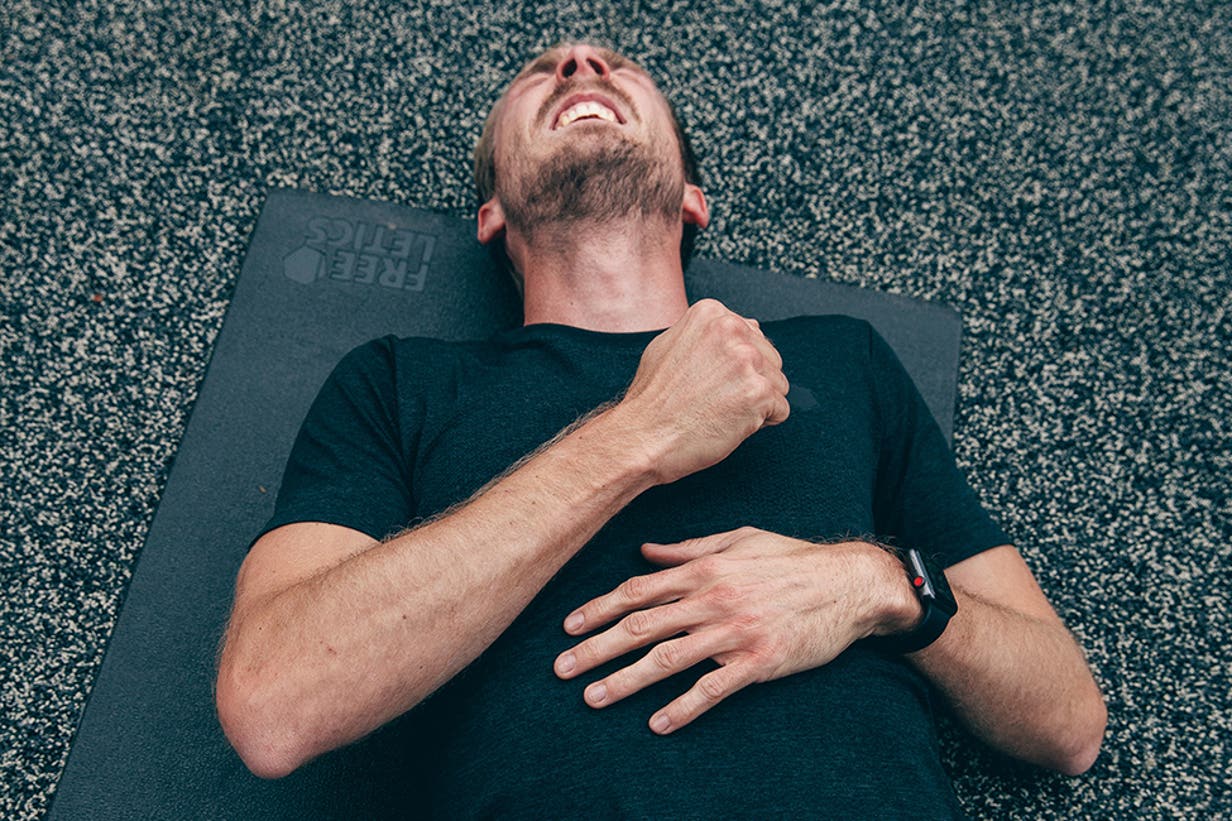Everyone’s heard of it, many moaned about it, and all Free Athletes, experienced it. But what on earth is muscle soreness? Which processes within the body trigger this uncomfortable feeling that can leave us crippled for days? Although the current state of research is still incomplete, meaning it’s not 100% clear why muscle soreness occurs, we gathered a great deal of research to provide you with as much accurate information as possible. Let’s try to answer the painful question: what is muscle soreness?
Muscle soreness comes in two forms
Muscle soreness is delayed muscle pain which occurs hours or even days after physical strain such as exercise. You might think all pain is the same, but actually there are two different types: delayed onset muscle soreness (DOMS) and eccentric muscle damage (EMD). It’s believed that especially through eccentric muscle contraction, muscle soreness is induced, normally described as muscle stiffness and pain as well as pressure sensitivity which usually peaks around 48 hours after the initial stimulus and can last up to one week.

How does it happen?
Think back to when we explained the structure of a muscle – remember the composition of a sarcomere and the myofibril? (Take a look over the article again if you need a reminder.) These all play a role in the mechanical process which occurs within your body, resulting in muscle soreness. To understand this mechanical process, we have to look at the following areas:
Mechanical destruction of the sarcomere structure: During exercise and especially eccentric contractions, sarcomeres are stretched rapidly and uncontrollably, leading to a destruction of their structure. Sounds painful, but what does it mean? Just imagine lengthening an elastic band over and over again. It will become stretched before reaching a point where it rips apart. This is similar to what happens to a sarcomere after repeatedly performing an eccentric contraction, for example squat jumps.
Disturbance of the excitation contraction coupling (E-C coupling): Remember how a muscle contracts? This is what we call the excitation contraction coupling. In the case of muscle soreness, this mechanism is disturbed due to a damaged t-tubule structure. In simplified terms, this disturbance prevents the action potential (electric signal coming from the central nervous system) from finding its way into the muscle. It’s like trying to fill an inflatable pool with a torn water hose – the water is there, but it won’t make its way into the pool.
Destructed sarcoplasmic reticulum: Don’t worry too much about the term, just imagine this structure as a big calcium store located within your muscle that is responsible for initiating a contraction. Here, calcium is uncontrollably released which causes minor injuries within the muscle. This can also be responsible for the pain you feel after a tough (eccentric) session. Luckily, your body has a protective measure to combat this. It’s called the repeated bout effect. We’ll take a look at this in the upcoming article next week.
These processes can all happen at the same time, one at a time or also independently from each other. It all depends on how long and how often your muscles are put under stress.

Can muscle soreness affect your athletic performance?
The simple answer is yes. By assessing the impact on performance after a training session with concentric and eccentric muscle contraction, muscle soreness was proven to have a negative impact on performance, both at a competitive and noncompetitive level. These two processes were scientifically measured to demonstrate the negative impact :
- How well maximum force is able to be produced during an isometric exercise (maximum voluntary contraction – MVC) such as pressing against a plate with your legs at the stage of experiencing muscle soreness.
- How well can a target muscle be contracted (voluntary activation – VA) during an isometric exercise at the stage of experiencing muscle soreness.
The key findings of this research were that maximum force produced at the stage of muscle soreness decreased by 25% in the following two days and also the activation of the target muscles – simple contraction of the muscle – decreased by 15%.
What does this tell us? Sore muscles and their effect on your body are highly likely to prevent you from achieving a PB – in almost every case.
Discover which measures exist that can treat or cure muscle soreness in the next article.